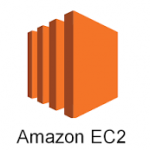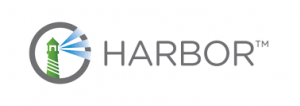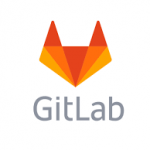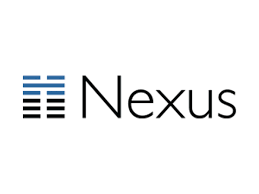Container Registries You Might Have Missed
Registries are one of the key components that make working with
containers, primarily Docker, so appealing to the masses. A registry
hosts images that are downloaded and run on hosts in a container engine.
A container is simply a running instance of a specific image. Think of
an image as a ready-to-go package, like an MSI on Microsoft Windows or
an RPM on SUSE Linux Enterprise. I won’t go into the details of how
registries work here, but if you want to learn more,this
article is
a great read. Instead, what I’d like to do in this post is highlight
some of the container registries that currently remain under the radar.
While the big-name registries are already familiar to most people who
work with Docker, there are smaller registries worth considering, too,
when you are deciding where to host your images. Keep reading for a
discussion of these lesser-known container registries.
The Well-Known Registries
First, though, let me identify the big-name registries, so that it’s
clear what I’m comparing the under-the-radar registries to. By all
accounts, currently, the most popular registry is Docker
Hub. Docker Hub is the center of the known
registry universe. It is the default hosted registry that every Docker
install is configured to reference. Other popular registries include:
- Docker Trusted
Registry, which
is based on the open source Docker
Distribution - Quay.io, a hosted registry from CoreOS
- Enterprise Registry, an
on-premises version of Quay - Google Container
Registry, a hosted
registry on Google Cloud Platform - Artifactory by JFrog, which
can be deployed on-premises or hosted
The Registries you Might Be Missing
Now, let’s get to the interesting part. Here is an overview of
lesser-known registries.
Amazon EC2 Container Registry (ECR)
 You probably already know that Amazon offers a hosted container service called Amazon EC2 Container Service (ECS). But the registry that Amazon provides to complete ECS tends to receive less attention. That registry, called Amazon EC2 Container Registry
You probably already know that Amazon offers a hosted container service called Amazon EC2 Container Service (ECS). But the registry that Amazon provides to complete ECS tends to receive less attention. That registry, called Amazon EC2 Container Registry
(ECR), is a hosted Docker container
registry. It integrates with ECS. Introduced in December 2015, it is a
somewhat newer registry option than most of the better-known registries,
explaining why some users may not be familiar with it. ECS is not the
only container registry that is compatible with ECR. ECS supports
external registries, too. However, the main advantage of ECR is that it
is a fully hosted and managed registry, which simplifies deployment and
management. ECR also is as scalable as the rest of the ECS
infrastructure — which means it is very, very scalable. Best Use
Cases: If you are a heavy user of AWS services, or plan to be, and are
starting to look for a place to host private images, then ECR makes
perfect sense to use. It is also a good choice if you have a large
registry deployment or expect your registry to expand significantly over
time; in that case, you’ll benefit from the virtually unlimited
scalability of ECR.
FlawCheck Private Registry
FlawCheck Private Registry (which was recently
acquired, along with the rest of FlawCheck’s business, by security
vendor Tenable) is a security-focused registry option. It offers
integrated vulnerability scanning and malware detection for container
images. While there is no magic bullet for keeping your container images
free of malicious code, or preventing the insertion of malicious images
into your registry, FlawCheck’s scanning features can help mitigate the
risks. Best Use Case: For security-conscious companies out there, this
is a really great option. I foresee a lot of adoption for this registry
in heavily regulated industries.
GitLab Container Registry
GitLab Container Registry, which can run as a hosted or on-premises registry, is GitLab’s solution for hosting container images. It’s built into GitLab and completely compatible with the rest of GitLab’s tools, which means it can integrate directly into your GitLab delivery pipeline. That’s an advantage if your team is seeking to adopt a seamless, DevOps workflow with as few moving
parts as possible. Best Use Case: Some developers will find it
convenient to store their Docker images on the same platform as their
source code. If you use GitLab for your source code, then you’ll likely
find the GitLab Container Registry handy. Otherwise, however, GitLab
Container Registry doesn’t offer any killer features unavailable from
most other registries.
Portus by SUSE
Portus is not technically a registry, but it provides a front-end that replaces the native UI for on-premises deployments of Docker Registry. Portus is designed to add value to Docker Registry by providing extra access control options. These include the ability to configure “Teams” or
registry users, with different access levels established for each Team.
(In many ways, this feature is similar to user groups on Unix-like
systems.) Portus also supports registry namespaces, which make it
possible to configure the types of modifications individual users, as
well as teams of users, can make to different repositories on a granular
basis. Also notable is that Portus provides a user-friendly Web
interface for configuring registry settings and access controls. (A CLI
configuration tool, portusctl, is available as well.) Best Use Case:
If you like Docker Registry but need extra security controls, or have
other reasons to use fine-grained access control, Portus is a strong
solution.
Sonatype Nexus
Sonatype Nexus, which supports
hosted and on-premises deployments, is a general-purpose repository. It
supports much more than Docker image hosting, but it can be used as a
Docker registry as well. It has been around for much longer than Docker,
and is likely to be familiar to seasoned admins even if they have not
previously worked with container registries. The core Nexus platform is
open source, but a commercial option is available as well. Best Use
Case: Many companies have had Nexus deployed as a repository for Maven
for years. By simply upgrading to a modern release of the platform,
organizations can add support for hosting Docker images, thereby
creating their own Docker registry without having to train development
or operational staff on a new product. Plus, they can host other types
of artifacts alongside Docker images.
VMware Harbor Registry
 You
You
might not think of VMware as a major player in the Docker ecosystem, but
the company certainly has its toes in the water. Harbor
Registry is VMware’s answer for
hosting Docker images. This registry is built on the foundation of
Docker Distribution, but it adds security and identity-management
features. It also supports multiple registries on a single host. Best
Use Case: Because of Harbor’s focus on security and user management,
this option offers some valuable registry features that enterprises
might seek, which are not available from all other registries. It’s a
good choice in the enterprise. It’s worth noting, too, that because
Harbor runs as Docker containers, it is easy to install on any server
that has a Docker environment — and the developers even offer an
offline installer, which could be handy in situations where security
considerations or other factors mean that a connection to the public
Internet is not available.
Conclusion
The main variables between the different registry offerings include what
type of deployment environment they support (hosted, on-premise or
both); how fine-tuned their access control options are; and how much
additional security they provide for container registries. Choosing the
right registry for your needs, of course, will depend on how these
features align with your priorities. But with so many choices, it’s not
difficult to find a registry that delivers the perfect balance for a
given organization’s needs. About the Author: Vince Power is an
Enterprise Architect at Medavie Blue Cross. His focus is on cloud
adoption and technology planning in key areas like core computing
(IaaS), identity and access management, application platforms (PaaS),
and continuous delivery. You might also be interested in:
- White Paper: Comparing Kubernetes, Mesos, and Docker
Swarm













